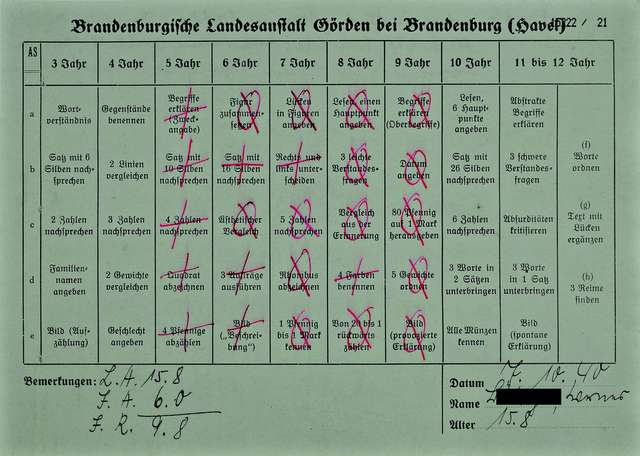Exclusion of children
When admitted to the institution, children and adolescents were assessed and treated mainly according to how well they could be taught. Classification usually occurred after an intelligence test based on an intelligence test that had been in use since 1905 (Binet-Simon test). In school of the institution, pupils were supposed to learn and be fostered according to their mental abilities. This practice, which had developed since the early 20th century, became a deadly threat in the National Socialist era. Children and adolescents who failed the intelligence test and did badly in the school of the institution were regarded as »incapable of being educated« and »unfit for life«. There was no place for them in a psychiatric programme aimed at healing and integrating them into working life.
As part of the National Socialist »euthanasia« programme, children and adolescents were murdered not only in the »children's wards« of the »Reich Committee for the Scientific Registering of Serious Hereditary and Congenital Illnesses« but also in the gas chambers of the T4 killing centres. When they were being selected, their assessed »ability to be educated« played the decisive role. The victims of »Aktion T4« included around 4,200 minors, of which almost 77 per cent were considered to be »uneducable«. This assessment affected girls and boys equally and was mostly made in conjunction with the diagnosis of »congenital or early acquired imbecility«.

© Bundesarchiv Berlin, R 179/15222